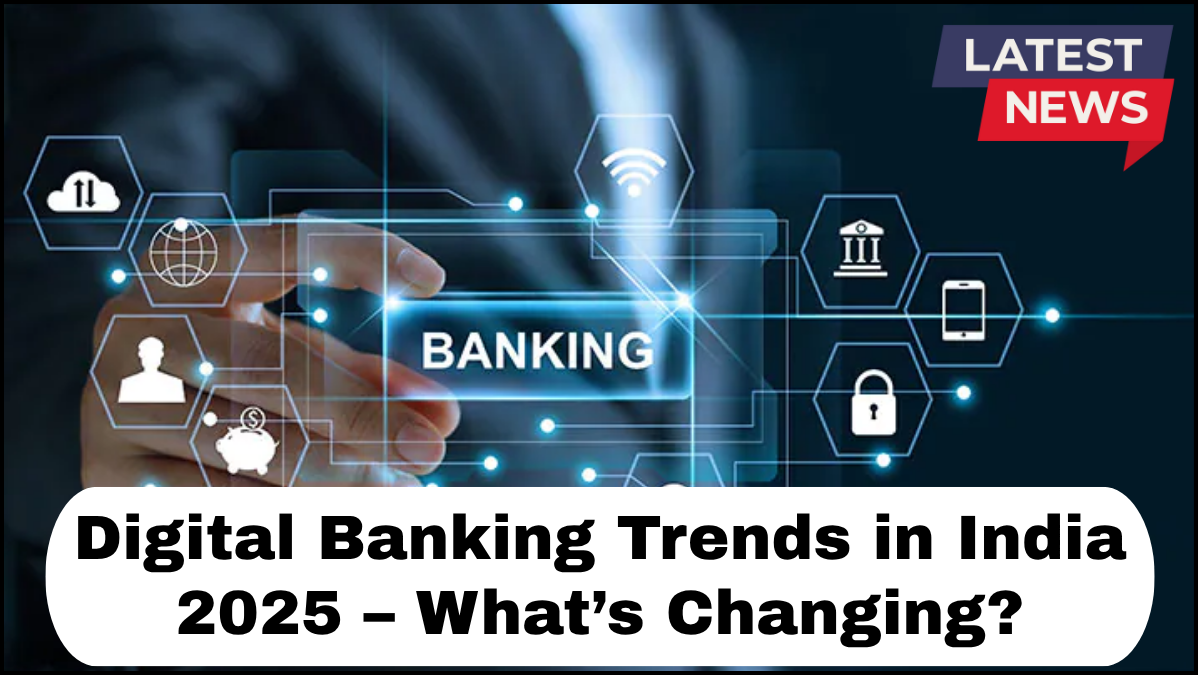India’s banking sector is undergoing a digital transformation at a scale and speed never seen before. As we approach 2025, the landscape is being reshaped by technological innovation, policy support, and evolving customer expectations. This banking sector update highlights the major digital banking trends driving change in India, with a close look at how digital payments in India are evolving alongside.

Rise of AI-Driven Personalization
Banks are no longer just financial institutions—they’re becoming tech-driven service providers. Artificial Intelligence (AI) and Machine Learning (ML) are enabling hyper-personalized experiences based on customer behavior, preferences, and transaction history.
From personalized investment advice to intelligent chatbots handling routine queries, AI is helping banks streamline operations while improving customer satisfaction. For instance, ICICI Bank’s iPal and HDFC Bank’s EVA are AI-powered platforms that offer quick, round-the-clock support, reducing dependence on traditional customer service channels.
Expansion of Digital-Only Banks
2025 is seeing the growth of digital-only, or “neobanks,” in India. These banks operate entirely online without physical branches, offering low-cost operations and faster onboarding.
Startups like Jupiter, Fi, and Niyo are targeting millennials and Gen Z customers who prefer seamless, app-based banking. Traditional players like Kotak and Axis are also launching digital-first platforms to remain competitive. This shift is making banking more accessible, especially to younger and tech-savvy demographics.
UPI 2.0 and the Surge of Contactless Transactions
Unified Payments Interface (UPI) continues to lead the charge in digital payments in India. In 2025, UPI 2.0 introduces features like overdraft facilities, biometric authentication, and automatic invoice verification.
Contactless and QR-based payments are now mainstream, even in semi-urban and rural regions. The volume of UPI transactions surpassed 15 billion per month in early 2025, indicating massive adoption and trust in digital payment systems. This trend is pushing banks to upgrade infrastructure and ensure faster, safer processing of digital transactions.
Blockchain for Secure and Transparent Banking
Blockchain is no longer just a buzzword—it’s being integrated into core banking operations to enhance security and transparency. Several Indian banks are testing blockchain for trade finance, cross-border payments, and smart contracts.
For example, State Bank of India and Axis Bank are part of a consortium using blockchain to reduce fraud and settlement time in trade transactions. As regulatory clarity improves, we can expect broader adoption across the banking ecosystem.
Embedded Finance: Banking Without Banks
Embedded finance is blurring the lines between traditional banks and non-banking platforms. Retailers, fintechs, and even telecom companies are embedding financial services directly into their apps and websites.
For instance, Flipkart and Amazon offer instant credit and BNPL (Buy Now, Pay Later) options during checkout, powered by backend banking partners. In 2025, more such partnerships are emerging, bringing financial services to consumers without them needing to interact directly with a bank.
Open Banking Ecosystems
Open banking, enabled through APIs (Application Programming Interfaces), is unlocking data-driven innovation. Banks are sharing select customer data with third-party developers (with consent), allowing new services like multi-bank dashboards, budgeting apps, and smarter lending platforms.
RBI’s Account Aggregator (AA) framework is a prime example of this shift. It empowers customers to share their financial data securely, leading to better credit decisions, customized offers, and financial inclusion.
Cybersecurity and Regulatory Focus
With digitization comes increased risk. In 2025, cybersecurity is a top priority. Banks are investing in advanced fraud detection systems, real-time monitoring, and biometric security.
Simultaneously, the Reserve Bank of India (RBI) continues to tighten regulations around digital banking. New guidelines for digital lending, KYC norms, and data protection are aimed at ensuring customer trust and system stability.
Frequently Asked Questions (FAQs)
Q1: What are the major trends in digital banking in India in 2025?
A: Key trends include AI-driven personalization, growth of neobanks, expanded UPI features, blockchain integration, embedded finance, open banking, and heightened cybersecurity focus.
Q2: How is UPI evolving in 2025?
A: UPI 2.0 introduces features like overdraft facilities, biometric verification, and invoice-based payments, enhancing the convenience and security of digital payments in India.
Q3: What is embedded finance and how is it impacting banks?
A: Embedded finance allows non-banking platforms to offer financial services, reducing reliance on traditional bank interfaces. This is pushing banks to adapt by forming strategic fintech partnerships.
Q4: Are Indian banks ready for blockchain adoption?
A: Yes, several banks are piloting blockchain use in trade finance and payments. As regulatory clarity improves, broader adoption is expected.
Q5: What is the role of AI in the future of Indian banking?
A: AI is central to the personalization of services, fraud detection, automated customer support, and smarter lending—making operations more efficient and customer-centric.
click here to learn more